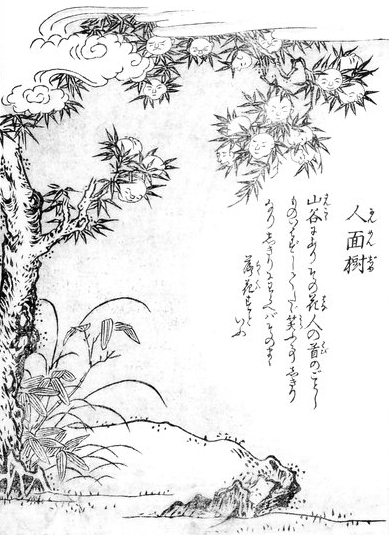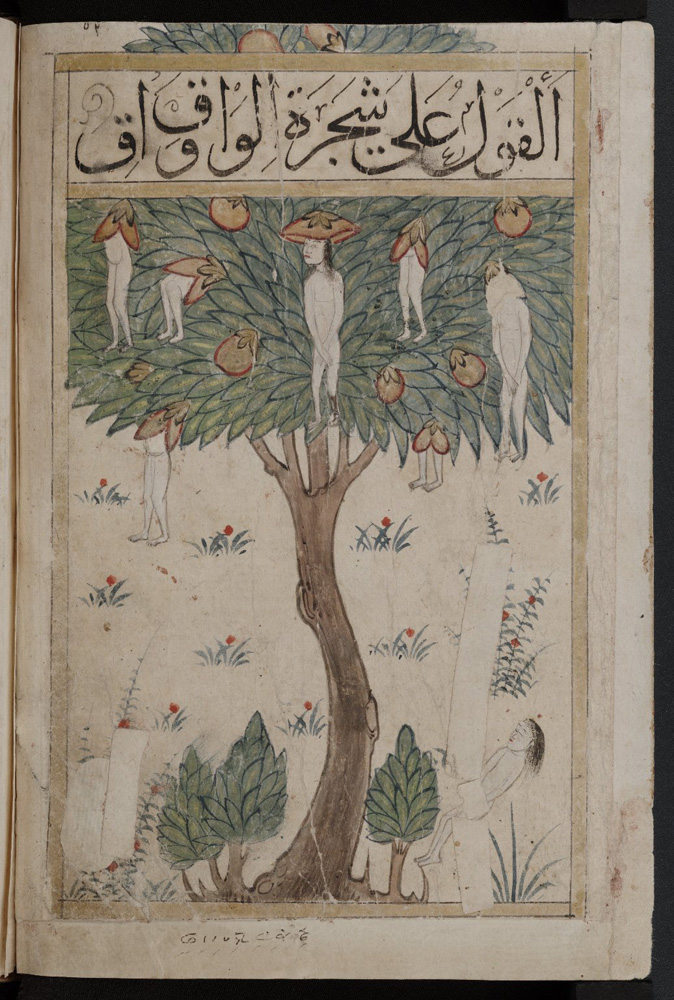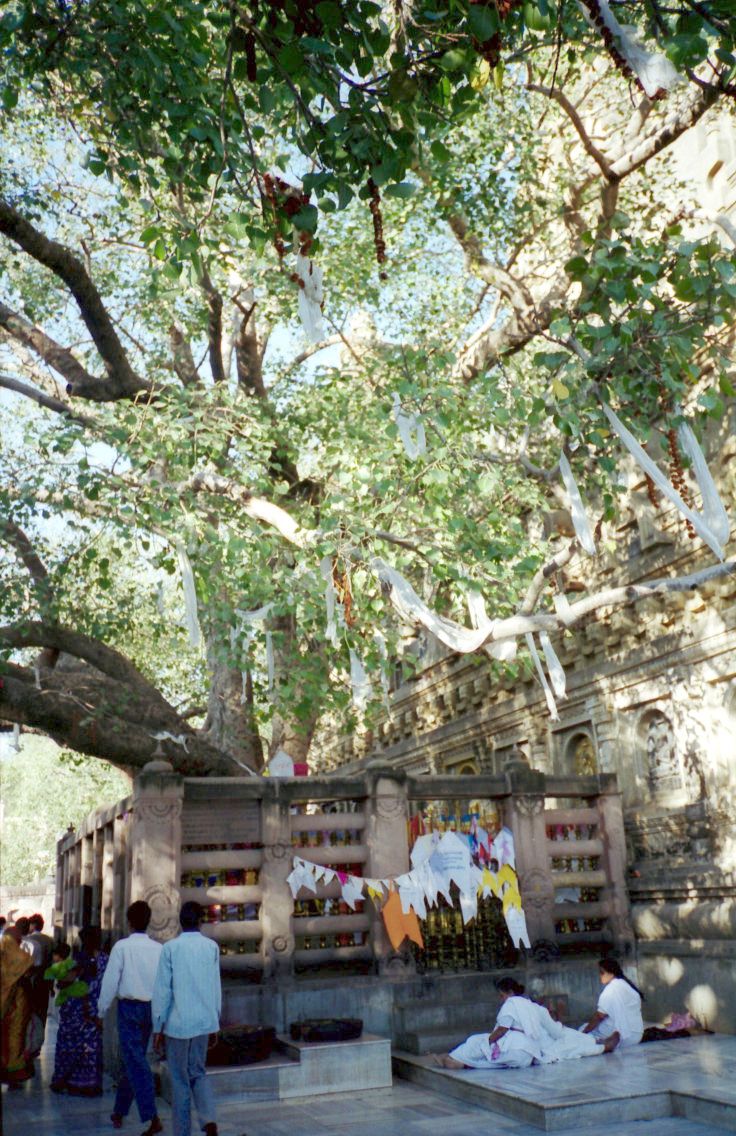|
Jinmenju
Jinmenju or Ninmenju () is a type of ''Yōkai'' and ''Yaoguai'' in Japanese and Chinese folklore. It is commonly depicted as a tree bearing flowers that resemble human heads. It notably appears in the Edo period ''Konjaku Hyakki Shūi'' by Toriyama Sekien. Concept The ''Konjaku Hyakki Shūi'' depicts it as a tree blooming with flowers that resemble human heads, with the following explanatory text: Besides Japanese yōkai, the ''Konjaku Hyakki Shūi'' also included publications of plants, animals and yōkai outside of Japan and this "jinmenju", as well as the ''Wakan Sansai Zue'', quote from the Chinese ''Sancai Tuhui'', which describes a similar tree from a land called "Dashiguo" ( romaji: ; ). According to the ''Sancai Tuhui'', Dashiguo is a land one thousand '' li'' southwest, with flowers like human heads, and upon asking it questions, its flowers would laugh, but it wouldn't understand human language. If they laughed too much, the flowers would wither and fall. The ''Rōō ... [...More Info...] [...Related Items...] OR: [Wikipedia] [Google] [Baidu] |
Wāḳwāḳ
Al-Wakwak ( '), also spelled al-Waq Waq, Wak al-Wak or just Wak Wak, is the name of an island, or possibly more than one island, in medieval Arabic geographical and imaginative literature. Identification with civilisations Wakwak is referred to in a number of sources; it is generally an island far away. In Arab versions, the famous island of Waq-Waq is located in the China Sea. A queen rules the island and the population is entirely female: it is usually illustrated in al-Qazvini manuscripts of the '' Wonders of Creation'' showing the queen surrounded by her female attendants. Ibn Khordadbeh mentions Waqwaq twice:Saudi Aramco World: The Seas of Sindbad Paul Lunde. The ''Suma Oriental'' of Tom� ... [...More Info...] [...Related Items...] OR: [Wikipedia] [Google] [Baidu] |
List Of Tree Deities
A tree deity or tree spirit is a nature deity related to a tree. Such deities are present in many cultures. They are usually represented as a young woman, often connected to ancient fertility and tree worship lore.Heinrich Zimmer, ''Myths and Symbols in Indian Art and Civilization.'' (1946) The status of tree deities varies from that of a local fairy, ghost, sprite or nymph, to that of a goddess. Examples of tree deities The Yakshis or Yakshinis (), mythical maiden deities of Hindu, Buddhist, and Jain mythology are closely associated with trees, especially the ashoka tree and the sal tree. Although these tree deities are usually benevolent, there are also yakshinis with malevolent characteristics in Indian folklore. Panaiveriyamman, named after ''panai'', the Tamil name for the Palmyra palm, is an ancient fertility deity linked to this palm that is so important in Tamil culture. This deity is also known as Taalavaasini, a name that further relates her to all types of palm ... [...More Info...] [...Related Items...] OR: [Wikipedia] [Google] [Baidu] |
Aizu
is the westernmost of the three regions of Fukushima Prefecture, Japan, the other two regions being Nakadōri in the central area of the prefecture and Hamadōri in the east. As of October 1, 2010, it had a population of 291,838. The principal city of the area is Aizuwakamatsu. It was part of Mutsu Province; the area once was part of Iwase Province created during the reign of Empress Genshō.Meyners d'Estrey, Guillaume Henry Jean (1884). ; excerpt, '' Genshō crée sept provinces : Idzumi, Noto, Atoa, Iwaki, Iwase, Suwa et Sado en empiétant sur celles de Kawachi, Echizen, Etchū, Kazusa, Mutsu and Shinano'' The ''Yōrō Ritsuryo'' established the Iwase Province in 718 through the division of the Michinoku Province ( Mutsu Province). It was composed of five districts of Shirakawa (白河), Iwase (石背), Aizu (会津), Asaka (安積) and Shinobu (信夫). The area encompassed by the province reverted to Mutsu some time between 722 and 724. During the Edo p ... [...More Info...] [...Related Items...] OR: [Wikipedia] [Google] [Baidu] |
Japanese Folklore
Japanese folklore encompasses the informally learned folk traditions of Japan and the Japanese people as expressed in its oral traditions, Tradition, customs, and material culture. In Japanese, the term is used to describe folklore. The Folklore studies, academic study of folklore is known as . Folklorists also employ the term or to refer to the objects and arts they study. Folk religion Men dressed as namahage, wearing ogre-like masks and traditional straw capes (''mino (straw cape), mino'') make rounds of homes, in an annual ritual of the Oga Peninsula area of the Northeast region. These ogre-men masquerade as kami looking to instill fear in the children who are lazily idling around the fire. This is a particularly colorful example of folk practice still kept alive. A parallel custom is the secretive ritual of the Yaeyama Islands, Okinawa Prefecture, Okinawa which does not allow itself to be photographed. Many, though increasingly fewer households maintain a kamidana or ... [...More Info...] [...Related Items...] OR: [Wikipedia] [Google] [Baidu] |
Trees In Mythology
Trees are significant in many of the world's mythologies, and have been given deep and sacred meanings throughout the ages. Human beings, observing the growth and death of trees, and the annual death and revival of their foliage, have often seen them as powerful symbols of growth, death and rebirth. Evergreen trees, which largely stay green throughout these cycles, are sometimes considered symbols of the eternal, immortality or fertility. The image of the Tree of life or world tree occurs in many mythologies. Examples include the banyan and the sacred fig (''Ficus religiosa'') in Hinduism, Buddhism and Jainism, the tree of the knowledge of good and evil of Judaism and Christianity. In folk religion and folklore, trees are often said to be the homes of tree spirits. Germanic mythology as well as Celtic polytheism both appear to have involved cultic practice in sacred groves, especially grove of oak. The term ''druid'' itself possibly derives from the Celtic word for oak. The Eg ... [...More Info...] [...Related Items...] OR: [Wikipedia] [Google] [Baidu] |
Mythological Human Hybrids
Myth is a genre of folklore consisting primarily of narratives that play a fundamental role in a society. For scholars, this is very different from the vernacular usage of the term "myth" that refers to a belief that is not true. Instead, the veracity of a myth is not a defining criterion. Myths are often endorsed by religious (when they are closely linked to religion or spirituality) and secular authorities. Many societies group their myths, legends, and history together, considering myths and legends to be factual accounts of their remote past. In particular, creation myths take place in a primordial age when the world had not achieved its later form. Origin myths explain how a society's customs, institutions, and taboos were established and sanctified. National myths are narratives about a nation's past that symbolize the nation's values. There is a complex relationship between recital of myths and the enactment of rituals. Etymology The word "myth" comes from Ancie ... [...More Info...] [...Related Items...] OR: [Wikipedia] [Google] [Baidu] |
Nariphon
The Nariphon (, from Pali ''nārīphala''), also known as Makkaliphon (, from Pali ''makkaliphala''), is a tree in Buddhist mythology which bears fruit in the shape of young female creatures. The maidens grow attached by their head from the tree branches. This tree grows at the Himaphan, a mythical forest where the female fruits are enjoyed by the Gandharvas who cut the fruits and take them away. The Nariphon is also mentioned in the Vessantara Jātaka in which Indra placed these trees around the grove where the Bodhisattva Vessantara meditated. Myths and folklore According to Buddhist mythology, the god Indra created a pavilion (''Sala)'' as an abode for Vessantara, his wife, and two children to live. His wife went into the forest to collect fruits: she was, however, in danger of being attacked by hermits or yogis who lived in the forest. Although they had acquired special powers from their meditation, they had not conquered lust. Therefore, Indra created twelve of these speci ... [...More Info...] [...Related Items...] OR: [Wikipedia] [Google] [Baidu] |
Pokémon
is a Japanese media franchise consisting of List of Pokémon video games, video games, Pokémon (TV series), animated series and List of Pokémon films, films, Pokémon Trading Card Game, a trading card game, and other related media. The franchise takes place in a shared universe in which humans co-exist with creatures known as List of Pokémon, Pokémon, a large variety of species endowed with special powers. The franchise's primary target audience is children aged 5 to 12, but it is known to attract people of all ages. The franchise originated as Pokémon Red, Blue, and Yellow, a pair of role-playing games developed by Game Freak, from an original concept by its founder, Satoshi Tajiri. Released on the Game Boy on 27 February 1996, the games became sleeper hits and were followed by manga series, a trading card game, and anime series and films. From 1998 to 2000, ''Pokémon'' was exported to the rest of the world, creating an unprecedented global phenomenon dubbed "Pokémania ... [...More Info...] [...Related Items...] OR: [Wikipedia] [Google] [Baidu] |
平凡社
Heibonsha (平凡社) is a Japanese publishing company based in Tokyo, which publishes encyclopedias, dictionaries and books in the fields of science and philosophy. Since 1945 it has also published books on art and literature."Heibonsha, Ltd, Publishers" (entry) in: ''Japan: An Illustrated Encyclopedia'', Tokyo and New York, N.Y.: Kodansha, 1993, vol. 1, p. 521. Retrieved 28 June 2022. Similarly to the and the publishing houses, its publishing program is directed primarily at an academic audience and feature ... [...More Info...] [...Related Items...] OR: [Wikipedia] [Google] [Baidu] |
Yōkai
are a class of supernatural entities and Spirit (supernatural entity) , spirits in Japanese folklore. The kanji representation of the word comprises two characters that both mean "suspicious, doubtful", and while the Japanese name is simply the Japanese transliteration or pronunciation of the Chinese term ''yaoguai, yāoguài'' (which designates similarly strange creatures), some Japanese commentators argue that the word ''yōkai'' has taken on many different meanings in Japanese culture, including referring to a large number of uniquely Japanese creatures. are also referred to as , or . However, most Japanese generally think of the two loose classes of spirits as highly different, although some academics and Shinto practitioners acknowledge similarities within the seeming dichotomy between the natures of them and most ''kami'', which are generally regarded as relatively beneficent in comparison, and class the two as ultimately the same type of spirits of nature or of a m ... [...More Info...] [...Related Items...] OR: [Wikipedia] [Google] [Baidu] |






